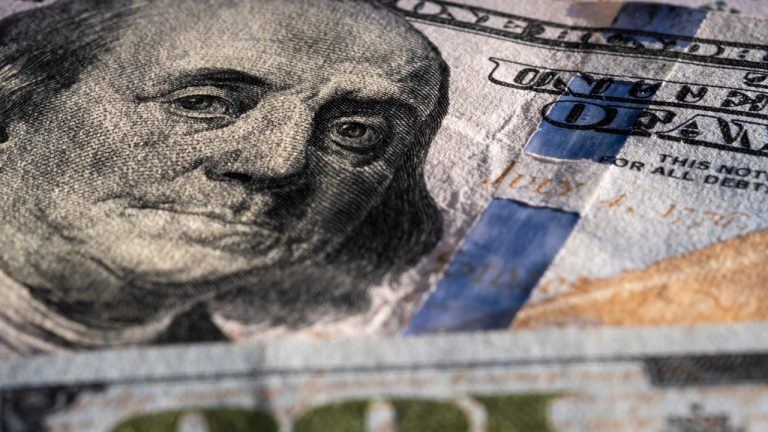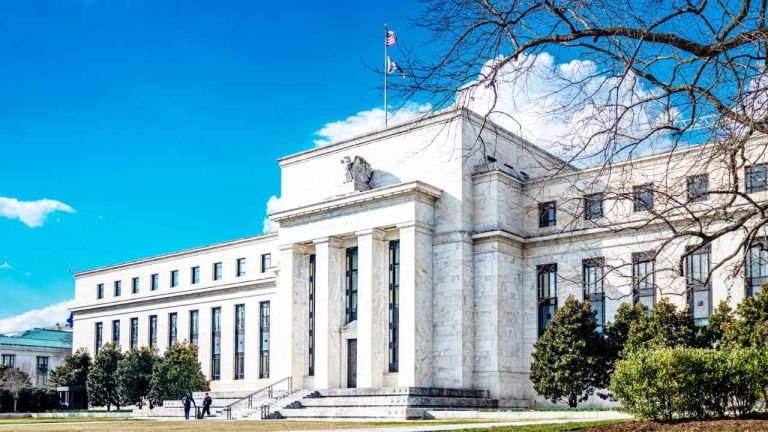
Tech billionaire Peter Thiel says the US economy would already be in a recession if not for massive government intervention. Speaking with fellow billionaire Chamath Palihapitiya at the All-In Summit 2024, Thiel says that an economic downturn is in sight for the US but it is being kept at bay by the government stimulating economic […]
The post Billionaire Peter Thiel Warns US Close to Recession, Says Economy Would Be Shaky if Not for Crazy Budget Deficit appeared first on The Daily Hodl.
 In recent weeks, both economists and technical indicators have hinted that the U.S. may be on the brink of a recession, causing anxiety to ripple through the markets. Meanwhile, over on X, the topic of recession is gaining more traction by the day, with users discussing the likelihood of an economic downturn. Social Media Buzzes […]
In recent weeks, both economists and technical indicators have hinted that the U.S. may be on the brink of a recession, causing anxiety to ripple through the markets. Meanwhile, over on X, the topic of recession is gaining more traction by the day, with users discussing the likelihood of an economic downturn. Social Media Buzzes […] On Thursday, the crypto market mirrored the stock market’s downturn ahead of Friday’s anticipated U.S. jobs report. All major U.S. stock indices slipped into the red, with bitcoin (BTC) tumbling 3.6% in the past 24 hours. Meanwhile, gold enjoyed a nearly 1% gain, climbing back above the $2,500 per ounce mark. Recession Fears Loom as […]
On Thursday, the crypto market mirrored the stock market’s downturn ahead of Friday’s anticipated U.S. jobs report. All major U.S. stock indices slipped into the red, with bitcoin (BTC) tumbling 3.6% in the past 24 hours. Meanwhile, gold enjoyed a nearly 1% gain, climbing back above the $2,500 per ounce mark. Recession Fears Loom as […] The prediction market Polymarket and CME’s Fedwatch tool suggest that a rate cut during the Federal Open Market Committee (FOMC) meeting in September is highly likely. However, BCA Research’s chief asset allocation strategist, Garry Evans, argues that even if rates are lowered, it won’t stop a recession in the United States. On the flip side, […]
The prediction market Polymarket and CME’s Fedwatch tool suggest that a rate cut during the Federal Open Market Committee (FOMC) meeting in September is highly likely. However, BCA Research’s chief asset allocation strategist, Garry Evans, argues that even if rates are lowered, it won’t stop a recession in the United States. On the flip side, […] UBS reported on Friday that U.S. stocks extended their rally as new economic data, including a 1% rise in July retail sales, eased concerns about a potential recession. Despite the encouraging consumer resilience, UBS cautioned that the risk of a significant economic slowdown remains, especially after weaker July jobs data. Investors are advised to wait […]
UBS reported on Friday that U.S. stocks extended their rally as new economic data, including a 1% rise in July retail sales, eased concerns about a potential recession. Despite the encouraging consumer resilience, UBS cautioned that the risk of a significant economic slowdown remains, especially after weaker July jobs data. Investors are advised to wait […] Rich Dad Poor Dad author Robert Kiyosaki has explained why he is preparing for a crash landing. He criticized U.S. leadership, including Vice President Kamala Harris, Treasury Secretary Janet Yellen, and Fed Chairman Jerome Powell, calling them “3-Stooges.” Kiyosaki advised his followers to invest in gold, silver, and bitcoin, emphasizing self-reliance over relying on the […]
Rich Dad Poor Dad author Robert Kiyosaki has explained why he is preparing for a crash landing. He criticized U.S. leadership, including Vice President Kamala Harris, Treasury Secretary Janet Yellen, and Fed Chairman Jerome Powell, calling them “3-Stooges.” Kiyosaki advised his followers to invest in gold, silver, and bitcoin, emphasizing self-reliance over relying on the […] Economist and gold advocate Peter Schiff has recommended that the Federal Reserve raise interest rates instead of cutting them, even if it leads to a market crash. He acknowledged that this approach would likely cause stocks and real estate to crash, result in a hard landing, and trigger a recession, emphasizing the potential severity of […]
Economist and gold advocate Peter Schiff has recommended that the Federal Reserve raise interest rates instead of cutting them, even if it leads to a market crash. He acknowledged that this approach would likely cause stocks and real estate to crash, result in a hard landing, and trigger a recession, emphasizing the potential severity of […]
Popular crypto analyst Benjamin Cowen thinks macroeconomic indicators suggest altcoins will chip away against Bitcoin’s (BTC) dominance in the coming months. In a new YouTube video, Cowen points his 807,000 subscribers to the Sahm Rule Recession Indicator, which tracks signals that could indicate the start of a recession. The indicator flashes when “the three-month moving […]
The post Recession Indicator Now Suggesting Altcoins Time To Shine Against Bitcoin Approaching: Benjamin Cowen appeared first on The Daily Hodl.
 JPMorgan Chase CEO Jamie Dimon reiterated his belief that a recession remains the most likely outcome for the U.S. economy. Dimon pointed to various uncertainties such as geopolitics, housing, and spending. Meanwhile, JPMorgan has raised the likelihood of a U.S. recession this year. Jamie Dimon Maintains Recession Likely for US Economy JPMorgan Chase CEO Jamie […]
JPMorgan Chase CEO Jamie Dimon reiterated his belief that a recession remains the most likely outcome for the U.S. economy. Dimon pointed to various uncertainties such as geopolitics, housing, and spending. Meanwhile, JPMorgan has raised the likelihood of a U.S. recession this year. Jamie Dimon Maintains Recession Likely for US Economy JPMorgan Chase CEO Jamie […] In a recent interview with Kitco News, Mike McGlone, Senior Commodity Strategist at Bloomberg Intelligence, warned that the current economic situation might surpass the 2008 financial crisis in severity. Drawing comparisons to pre-2008 indicators, McGlone highlighted significant risks of increased stock market volatility and global recession, particularly emphasizing economic challenges in China. He suggested that […]
In a recent interview with Kitco News, Mike McGlone, Senior Commodity Strategist at Bloomberg Intelligence, warned that the current economic situation might surpass the 2008 financial crisis in severity. Drawing comparisons to pre-2008 indicators, McGlone highlighted significant risks of increased stock market volatility and global recession, particularly emphasizing economic challenges in China. He suggested that […]